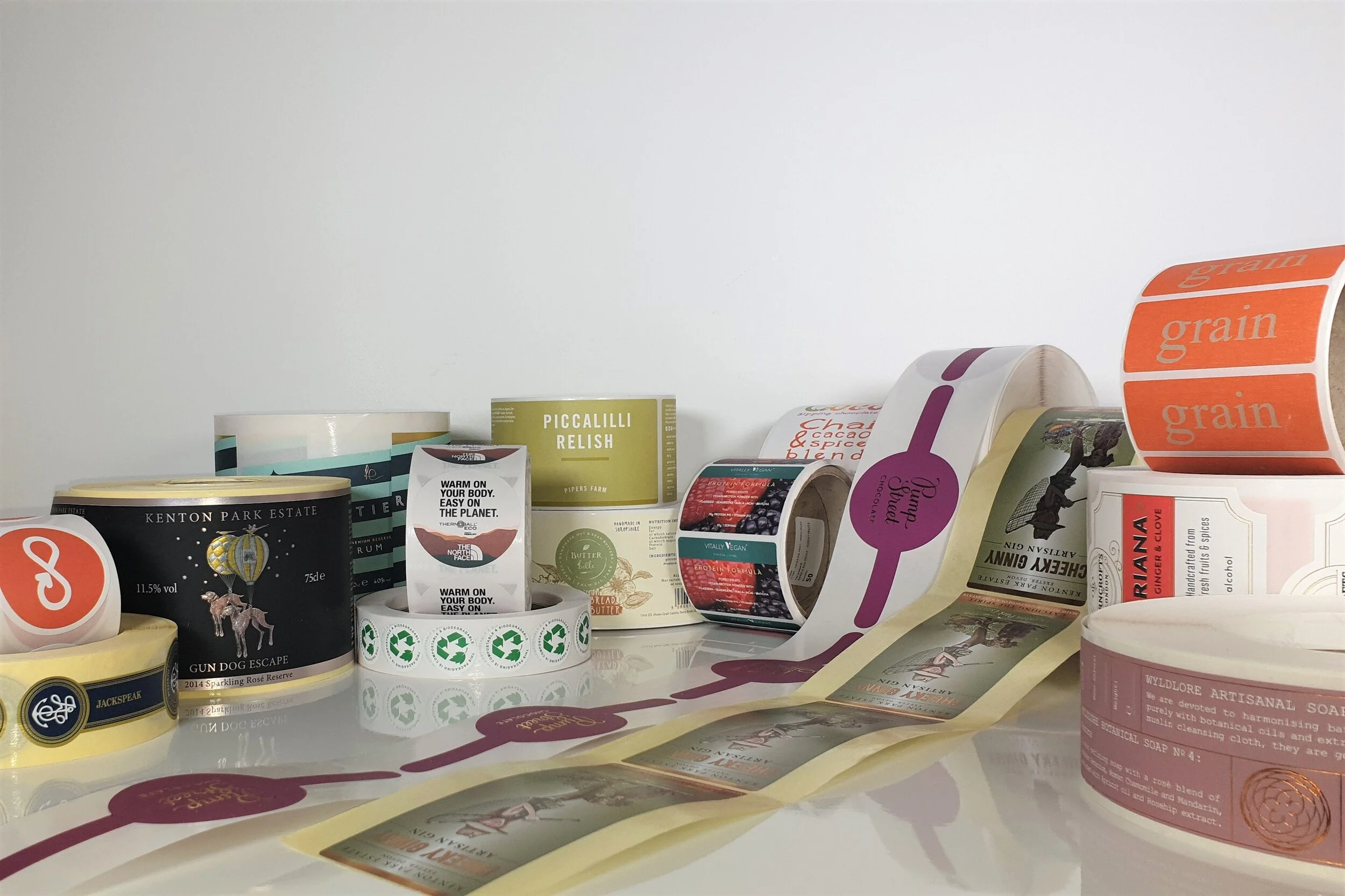All about the label
In competitive markets such as food, consumers goods and retail, it is imperative that you differentiate and enhance your product through its packaging. Being able to stand out on the shelves is the holy grail of product sales and your labels’ design will need to communicate your brand values and company vision in the glimpse of an eye.
You know your product is great, but how are you going to convince consumers? Here we have put together some ideas to help to navigate the maze of the label design and the printing method selection process.
Label Type
Deciding on a label type early on, before moving too far into the design process is a savvy idea. Choose from eco-friendly labels, freezer proof, waterproof, peelable, matt, gloss, metallic or even embossed. These are not just practical considerations but can effectively be used to communicate brand image. For example a matt finish is more classic and formal than gloss and an embossed label will add sophistication, elegance and flair. To find out more about the different printing methods, read our blog We Print Labels - No Jargon Zone!
Matching quality products for packaging and labelling with your product and brand, subtly influences consumer preference. Work with suppliers who share your ethos and values. If the environment is your priority there are plenty of green options available such as biodegradable labels and compostable labels for more sustainable packaging choices.
Label Shape and Size
We can use the size and shape of the label to compliment the size and shape of the packaging. Will
the label go on rounded shape packaging like a bottle or something flat and square like a box? The size of the container naturally restricts what you are able to put on the label. We have hundreds of shapes and sizes of stock cutters, however, if your label shape is particularly bespoke, you will likely need a cutter prepared just for your labels. This will normally be at an additional cost, so keep this in mind if you have a tight budget.
Prioritise the main messages and consider trying to use less ink if you want to offer more environmentally friendly packaging.
Label Colour Considerations
Consider the colour of the container, and if the container is clear, then the colour of the product. Pick a colour to match or stand out and contrast, but without being distracting. A designer can help you do this and provide mock ups of the finished version to help you make your decision.
Label Fonts
The chosen font shouldn’t be either too standard or too wacky, but should reflect the personality of your product and business. Let the font be easy on the eye and readable. Black text on white background is easier for most people to read than white text on black background which leaves most of us squinting particularly if the font is small.
Logos, Images and Awards
You probably already have a logo but if not, it is really worth investing in getting one done by a professional designer. Your logo is often one of the first points of connection with your customer. For sure, use other images on the label, but only if they communicate something relevant about the product and not just because you think it looks really, really… nice.
If your product has won an award, congratulations! Let everybody know by including it on the packaging. This can be done by retro-sticking award labels or including the award artwork within your label design.
Lastly, the Legal Stuff
Non-compliant labels can be damaging to a brand, not to mention costly if reprinting is necessary. Have your obligations checked, and be sure to meet the correct labelling standards and regulations. The Food Labelling Service can help by analysing your label content, reporting on key issues and problems and offering viable solution. Assessing your design quickly and efficiently will ensure any obvious errors are removed and that UK regulations are met sufficiently.
Here at inkREADible Labels, we can guide you through the maze of various label materials and printing methods to ensure you have a label that best suits your brand.





